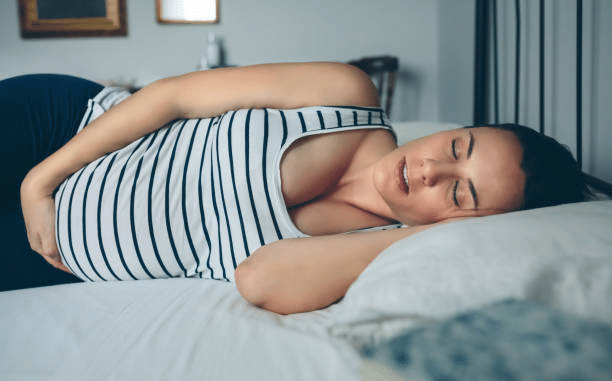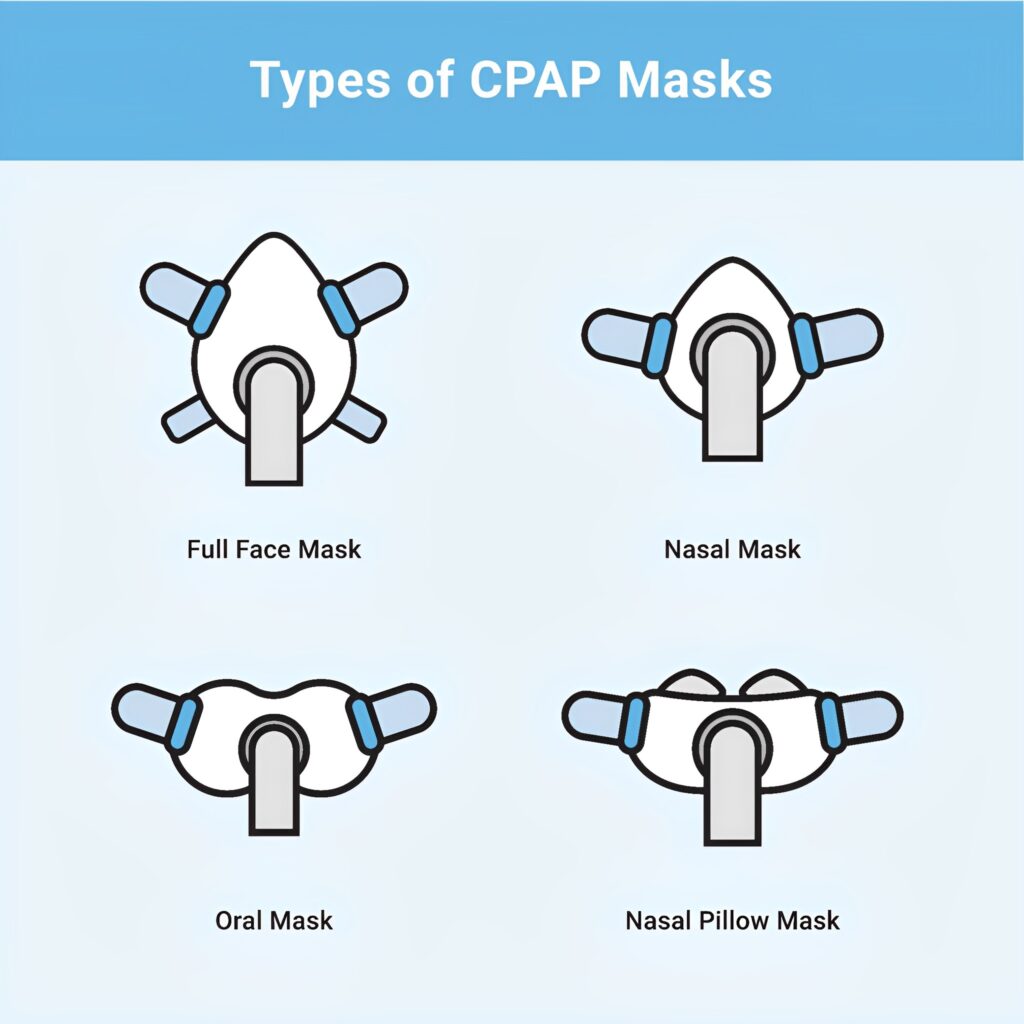CPAP therapy is a standard and effective treatment for persons with severe obstructive sleep apnea regardless of their sleep positions. Unfortunately, many people who use CPAP therapy experience frequent obstacles that limit their ability to benefit from it. Sleeping posture is one of the most crucial elements that might impact the efficacy of CPAP treatment.
This article will discuss the link between sleep positions and CPAP therapy and advise on sleeping in the optimal posture for this therapy. In addition, we will highlight the significance of seeing a healthcare professional identify the ideal sleeping posture and CPAP treatment for your unique requirements.
After this article, you will better grasp how sleep positions affect the efficacy of CPAP therapy and how to optimize your sleep position for a better night’s rest.
The Importance of Sleep Position for People with Obstructive Sleep Apnea

Obstructive sleep apnea (OSA) is a sleep disease characterized by recurrent pauses in breathing during sleep. It affects millions of individuals globally, and sleeping posture is one of the elements that might exacerbate the problem.
The Negative Effects of Sleeping on Your Back
Those with OSA should avoid sleeping on their back, often known as supine sleeping. This posture allows gravity to drag the tongue and soft tissues of the neck downward, obstructing the airway. Hence, individuals with OSA who sleep on their back may have more frequent and severe breathing pauses throughout the night, resulting in poor sleep quality and daily weariness.
In addition, evidence indicates that supine lying increases the risk of gastroesophageal reflux disease (GERD) in those with OSA. GERD is a digestive illness characterized by stomach acid reflux into the esophagus, resulting in heartburn and other symptoms. Sleeping on the back may exacerbate GERD symptoms by facilitating the movement of stomach contents up the esophagus.
Also Read: CPAP Therapy and GERD: What You Need to Know
The Benefits of Sleeping on Your Side
Unlike supine sleeping, sleeping on the side might benefit those with OSA. This posture prevents the tongue and soft tissues of the throat from compressing and clogging the airway during sleep, allowing for improved airflow.
According to research, sleep on the side may minimize the amount and length of breathing pauses in adults with moderate to severe OSA. Furthermore, lying on one’s side may enhance blood flow to crucial organs and lessen the risk of consequences linked with untreated sleep apnea.
Lying on one’s side may enhance sleep quality and lessen OSA symptom severity. But, if you are used to sleeping on your back, it may take some time to acclimate to a different sleeping posture.
Also Read: Best CPAP Mask for Side Sleepers
How CPAP Therapy Can Work with Sleep Position to Improve Sleep Quality
CPAP treatment works by continuously supplying air via a mask worn over the nose or mouth. The air pressure keeps the airway open during sleep, avoiding collapse and allowing proper breathing. This may significantly enhance sleep quality and lessen OSA-related symptoms.
In addition to Continuous Positive Airway Pressure (CPAP) treatment, sleep posture may enhance the quality of sleep for those with OSA. For instance, sleeping on your back might exacerbate severe sleep apnea symptoms by forcing the tongue and soft tissues of the throat to roll back and restrict the airway. On the other hand, sleeping on one’s side may assist in maintaining an open airway and lower the danger of airway collapse.
OSA patients who use CPAP treatment while sleeping on their side may see the most benefits. For instance, according to research published in the journal Sleep Medicine, participants who used CPAP treatment while lying on their side had more excellent sleep quality and fewer respiratory episodes than those who slept on their backs.
Moreover, utilizing CPAP while sleeping on one’s side may minimize the incidence of gastric reflux disease (GERD). With GERD, stomach acid pours back into the esophagus, producing heartburn and other symptoms. Sleeping on the left side has been proven to reduce the risk of GERD, and utilizing CPAP treatment while in this posture may further lower the risk.
Utilizing CPAP treatment while sleeping on the side may effectively enhance sleep quality and reduce OSA symptoms.
Variations in CPAP Masks For Each Sleep Position

Sleep apnea, a sleep condition that disrupts breathing during sleep, is often treated with CPAP therapy. CPAP entails wearing a mask over the nose and/or mouth that provides a steady stream of air to maintain open airways. But, not all CPAP masks are made equal, and choosing the proper one for your sleep position is essential for maximizing the therapeutic benefits.
The following kinds of CPAP masks are commercially available:
1. Nasal Masks
The nose is covered with nasal masks, which are attached to headgear. Those who breathe mostly via the nose while sleeping might benefit from these devices.
2. Face-to-Face Masks
The nose and mouth are covered with full-face masks attached to headgear. These are appropriate for mouth-breathing sleepers or those with difficulty breathing via their nose.
3. Nasal Pillow Masks
Little, cushioned inserts that fit straight into the nostrils are used in nasal pillow masks. They are perfect for those who prefer little headgear or who experience claustrophobia while wearing a face mask.
4. Oral Masks
Headgear attaches oral masks that fit over the mouth for individuals who have trouble breathing through their nose or prefer not to cover it.
5. Hybrid Masks
These masks combine the characteristics of nasal pillows and full-face covers. For the nose and mouth, they employ nasal cushions and a mouthpiece, respectively.
It is crucial to consider your sleep posture while purchasing a CPAP mask. For instance, if you sleep on your stomach, a nasal mask may be unpleasant and disrupt your sleep. If you sleep on your back, however, a nasal mask may place too much pressure on your nasal passages, making breathing difficult.
It is crucial to consult with a sleep expert or healthcare practitioner to determine the optimal CPAP mask for your sleeping position and unique requirements. They can advise you on the best mask for your needs and help you acclimate to using it.
Also Read: CPAP Mask Types: Everything You Need To Know!
Practical Tips for Sleeping in the Best Position for CPAP Therapy
If you have mild sleep apnea and are undergoing CPAP treatment, altering your posture may increase the therapy’s efficacy and lead to a more restful night’s sleep. Here are some ideas for sleeping in the optimal posture for CPAP therapy:
Utilizing Cushions To Maintain Your Side Position
Doctors often advise people with sleep apnea to sleep on their side. It may aid in preventing airway collapse and diminish the severity of apnea episodes. Yet, some individuals may find it challenging to maintain this posture throughout the night.
A straightforward approach is to utilize cushions to maintain your side position. Put a buffer between your knees to correct your hips, and support your head and neck with a second pillow. This will reduce snoring and apnea by keeping your airway open.
Investing In A Sleep Position Device Built Specifically For Those With Sleep Apnea
Many technologies are available to assist persons treating sleep apnea in maintaining an appropriate resting posture. Pillows, cushions, wedges, and even full-body supports are examples of these devices.
For instance, a wedge cushion may elevate the head and upper body, making breathing easier and decreasing the probability of apnea episodes. A pillow that supports the whole body may help you sleep on your side throughout the night.
Further Sleep Position Optimization Suggestions For CPAP Treatment
In addition to utilizing pillows and equipment to maintain a good sleeping position, you may take additional actions to improve your sleeping posture during CPAP treatment.
They consist of the following:
- Try not to sleep on your back: Back sleeping may increase the probability of apnea episodes. Try a full-body support cushion, or a tennis ball stitched into your pajamas to prevent you from rolling onto your back during the night.
- Raising the head of the bed: Raising the bed’s head a few inches may assist in avoiding acid reflux and lowering the chance of apnea episodes.
- Attempting various sleeping positions: Although sleeping on the side is the most often suggested posture for persons with sleep apnea, some individuals may find that alternative positions, such as sleeping on their stomach, are more effective. Try several poses to see what works best.
By taking efforts to adjust your sleep position during CPAP therapy, you may increase the efficacy of your treatment and experience a more restful night’s sleep.
The Importance of Consulting with a Healthcare Provider

A consultation with a healthcare expert, such as a sleep specialist or respiratory therapist, may assist you in determining the most effective therapy for your sleep apnea. They may assess the severity of your sleep apnea, discuss your symptoms, and propose the most suitable treatment choices, such as CPAP therapy or alternative treatments. In addition, they may assist you in modifying your CPAP machine, CPAP mask, and pressure settings to ensure a successful and pleasant therapy.
Key Takeaways
Controlling sleep apnea requires an essential sleep position, and experts widely regard sleeping on the side as the optimal posture for individuals with the disease. Sleeping on your back might aggravate sleep apnea symptoms by increasing upper airway resistance and decreasing blood flow. CPAP therapy is a successful treatment for sleep apnea; nevertheless, engaging with a healthcare practitioner is crucial to determine the optimal therapy and sleeping position for your requirements.
Several resources are accessible for those who want to learn more about CPAP treatment and sleeping postures. Sleep experts and professionals in clinical sleep medicine may provide helpful advice on improving your sleeping posture and selecting the ideal CPAP device and mask for your requirements. In addition, several online tools and support groups are available to assist you in connecting with people with sleep apnea and getting management advice.
Discover the ideal CPAP accessories in our Amazon shop to complement your sleep apnea treatment and enhance your sleeping posture. Take the first step towards better sleep and effective sleep apnea management by exploring our range of products tailored for your needs.




